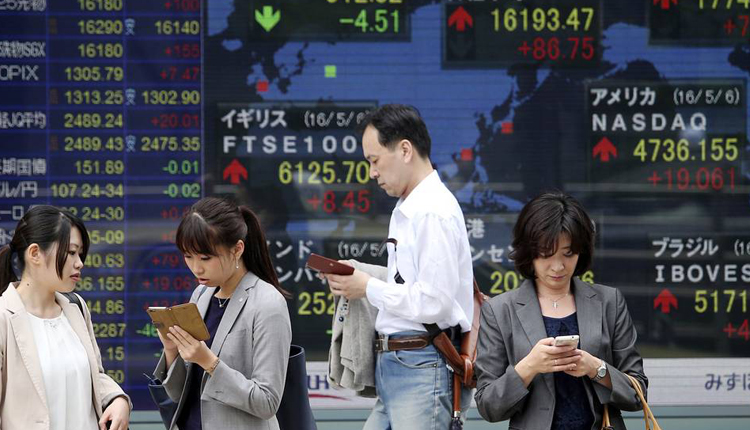Asian stocks traded mixed on Monday as investors await a U.S. Federal Reserve meeting set to happen later in the week stateside.
Mainland Chinese stocks were lower by the morning session’s end, with the Shenzhen composite down more than 0.5% and Shenzhen component slipping 0.6%. The Shanghai composite was also fractionally lower.
In Hong Kong, the Hang Seng index rose 0.6%, a day after large crowds gathered to demand that the city’s top official step down after she suspended — but didn’t withdraw — a controversial extradition bill.
One investor told CNBC that the situation in Hong Kong will likely have limited impact on markets as they are focused on the “bigger picture” at present.
”“If you really pin it down, I think they are really focused on two things: One is of course the trade tensions, that has a bigger impact on not only Hong Kong but the rest of the region and the world. And interest rates, I think this week we got a Fed meeting, everybody’s watching it very closely,” Haren Shah, managing director and head of investments at Taurus Wealth Advisors, told CNBC’s “Street Signs” on Monday.
Over in Japan, the Nikkei 225 in Japan traded fractionally higher, while the Topix slipped 0.32%. In South Korea, the Kospi shed 0.24%, while Australia’s ASX 200 fell 0.22%.
Data released last Friday showed China’s industrial output growth in May slowing to a more than 17-year low, widely below expectations. That figure came in at 5%, as compared to expectations of a 5.5% growth from a year earlier by analysts polled by Reuters.
The latest data from China comes as Beijing remains locked in a trade war with Washington, raising concerns over a slowdown in the former’s economy.
Investors are also looking ahead to an upcoming meeting by the Fed, amid expectations that the U.S. central bank could be cutting interest rates soon.
But there are three factors that could result in the U.S. central bank not moving on interest rates this time, according to Fed watchers: The looming G-20 summit at which the U.S. and China, at least theoretically, could reach a trade agreement; a desire not to be seen as overly influenced by the financial markets and U.S. President Donald Trump’s hectoring; and the desire to avoid making December’s rate hike look like a policy mistake.
“I think what we’re going to learn this week is just how patient the Fed is gonna continue to be and I think that’s probably the keyword. We’re gonna be looking in the statements to see whether they continue to use the word patient in terms of their monitoring of the economic data or whether, if that word is not there, I think that will be some hint … that the Fed is getting ready … to act in one way or another,” Christopher Smart, head of macroeconomic and geopolitical research at Barings, told CNBC’s “Squawk Box” on Monday.
The U.S. dollar index, which tracks the greenback against a basket of its peers, was at 97.497 after rising from levels below 96.8 last week.
The Japanese yen traded at 108.57 against the greenback after seeing levels below 108.2 in the previous trading week. The Australian dollar changed hands at $0.6879 after its decline from levels above $0.700 last week.
Oil prices rose in the morning of Asian trading hours, as the situation in the Middle East remains tense following attacks on two oil tankers last week. International benchmark Brent crude futures gained 0.26% to $62.17 per barrel, while U.S. crude futures added 0.19% to $52.61 per barrel.
Source: CNBC



